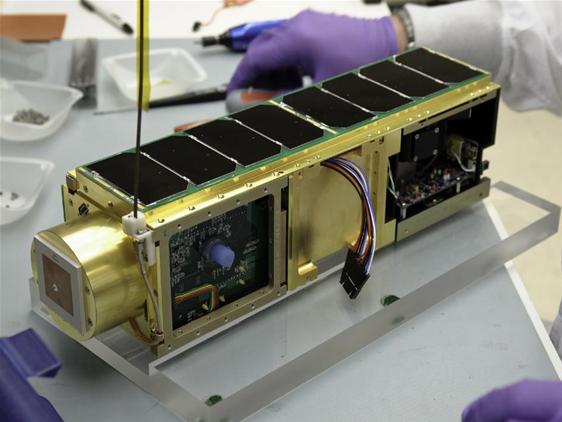Has NASA discovered extraterrestrial life?
December 1, 2010
UPDATE: NASA discovery of arsenic-based bacterium expands scope of SETI research.
NASA has announced it will hold a news conference in Washington, D.C. at 2 p.m. EST on Thursday, Dec. 2, to discuss “an astrobiology finding that will impact the search for evidence of extraterrestrial life.”
Participants are:
– Mary Voytek, Director, Astrobiology Program, NASA Headquarters, Washington, D.C.
– Felisa Wolfe-Simon, NASA Astrobiology Research Fellow, U.S. Geological Survey, Menlo Park, CA
– Pamela Conrad, Astrobiologist, NASA’s Goddard Space Flight Center, Greenbelt, MD
– Steven Benner, Distinguished Fellow, Foundation for Applied Molecular Evolution, Gainesville, FL
– James Elser, Professor, Arizona State University, Tempe, AZ
Speculation about the announcement has ranged from the recent discovery of oxygen and carbon dioxide on Saturn’s moon Rhea to the recently launched O/OREOS (Organism/Organic Exposure to Orbital Stresses) nanosatellite, which is conducting astrobiology experiments in low-Earth orbit. The research is intended to characterize the growth, activity, health and ability of microorganisms to adapt to the stresses of the space environment and monitor the stability and changes in four classes of organic molecules as they are exposed to space conditions.
KurzweilAI will report live on the news conference on Thursday via Twitter @kurzweilainews.
In unrelated news (we think), our sun may have a companion that disturbs comets from the edge of the solar system in the Oort cloud — a giant planet with up to four times the mass of Jupiter, Space.com is reporting. Art Bell fans: No, not Nemesis/Nibiru/Planet X.
Top image: artist concept of the ring of debris that may orbit Saturn’s second-largest moon, Rhea. (Credit: NASA)

